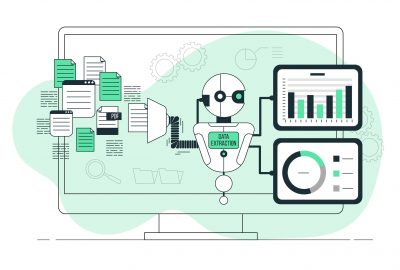In the 1960s, most people would not have imagined having a large-scale organization operating without a massive and carefully maintained archive of ledgers, paper records, and other must-keep documents. Less than half a century later, corporations now rely on their banks of digital information. Most will attribute this shift to the advent of computers, on the one hand, and personal computing on the other.
According to SearchCIO, the digitization of society that started in the late 20th century, and which has accelerated in the first decade of the 21st century, has spurred the digital transformation (also known as DX) that is being undertaken by many organizations today. As at today, “digital transformation” is the new buzz phrase amongst organizations just like the phrase “computer literacy” was among folks some twenty years ago.
Furthermore, organizations are having to transform much more rapidly, much more often and at a much faster pace today as a result of a confluence of technologies shaping modern customer expectations. Examples of these technological tools include the internet, Business Process Management (BPM), faster mobile (3G, 4G, and now 5G) communications and its attendant technologies, Cloud Computing, Robotics Process Management (RPA), Artificial Intelligence, Data Science, Machine Learning, Internet of Things, to mention just a few.

So What is Digital Transformation?
DX (digital transformation) is the use of digital technologies to create–or modify existing–business processes, organizational culture, and customer experience. What I see from the above definition are two classes: processes and people; and if we consider people, we have employees and customers. An organization’s implementation of a digital transformation strategy should impact on her employees and how they view and ‘enjoy’ their work. Of what use is DX if it does not lead to easier work but higher productivity?
Digitally Transformed ONLY at the Top
Sometime in April 2019 or so, a discussion came up in the office and Dipo made mention of an encounter he had with top management personnel of one of our very esteemed clients we provide BPM solutions in the form of ProcessMaker to. Dipo was informing him of RPA, a new service offering from our stables when this gentleman made a profound statement.
Paraphrased, it goes thus: “Dipo, you have already made my life easier because most of what comes to me for me to treat are already automated. All I have to do is click. I think this new technology you are talking about will be beneficial to those who handle the start tasks of the processes.”
This statement really caused me to pause and reflect. And my conclusion was that it is very much possible for an organization to be digitally transformed ONLY at its top strata. It is like the very dense foliage of some portions of the Amazon forest where the beautiful rays of sunlight grace the top of the forest canopy but hardly trickles to the forest floor.
Workflow Automation in Today’s Context
Workflow automation refers to the automation of business processes using digital workflows designed based on workflow rules so that human tasks, data or files are routed between people or systems based on pre-defined business rules. This definition is quite sufficient from the viewpoint of BPM (Business Process Management) but does not cut it at all, from a much broader perspective.
In today’s business world in the grip of DX, workflow automation now leverages RPA technology to integrate process automation tools to replace manual tasks and paper-based processes with rule-based logic that may or may not be incorporated with artificial intelligence.
What is Robotic Process Automation (RPA)?
It is a software technology that enables employees to focus better on higher priority tasks by pushing the monotonous, routine tasks to software robots to complete. The robots work in a direct manner across application user interfaces. The input data automatically and trigger actions across many different systems acting on the employee’s behalf.
This definition by Elena Haidukova and the simplicity of it puts the importance of RPA in today’s business organization into perspective. RPA is a must-have tool because the robots can be configured to execute work tasks alone or in conjunction with human workers.
RPA: The Next Phase of your Digital Transformation Journey?
For processes where a lot of data is entered at the beginning, BPM makes work easy for participants at the latter stages of such processes because they only have to do a few clicks to approve or reject each work case; this is process automation at the top. RPA, therefore, provides a means of making work easy for those at the first or early tasks because one or more robots can be employed to bear the burden of the monotonous data entry; this is process automation at the bottom.
Quoting Elena again, “Deploying BPM and RPA together provides you with a powerful platform to enable digital transformation throughout your organization. RPA can assist you to boost the gains you have achieved with a conventional BPM system. Implementing RPA and BPM together can bring about the most significant value and process automation that one technological approach alone cannot be able to achieve.”
It is time to get your organization automated from top to bottom. And dipoleDIAMOND remains your committed and trusted partner in orchestrating this next phase of your organization’s digital transformation journey. As a silver partner with UiPath and an elite partner with Processmaker, we are in a prime position to use today’s technologies to solve business problems. Give us a call today.






